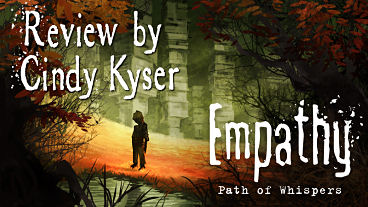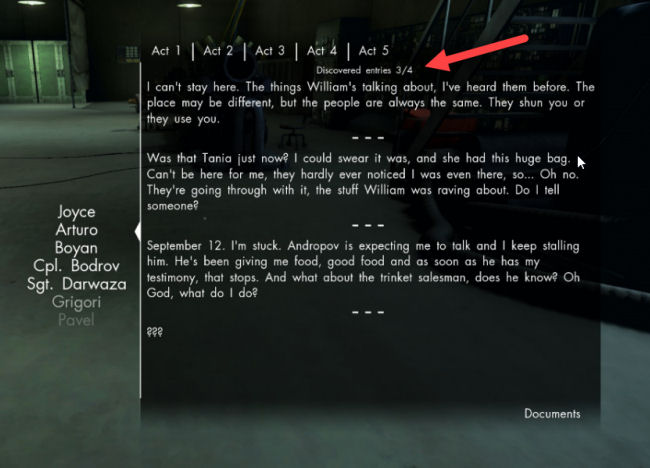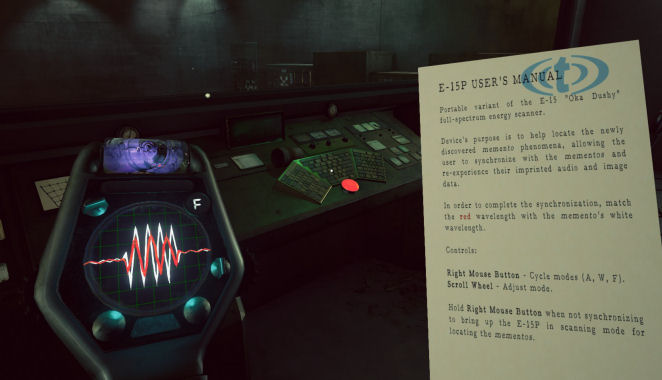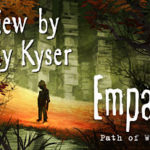
Empathy: Path of Whispers Review
I would highly recommend Empathy: Path of Whispers to any player who enjoys thoughtful adventuring and favors a complex story over adrenaline and action







Genre: 3D Adventure
Release date: May 16, 2017
Pixel Night is an independent game development studio based in Stockholm, Sweden. With founder Anton Pustovoyt as lead game designer, Empathy: Path of Whispers is their first release. Add in a story and dialog written by Joachim Kvarnälv and original music composed by Nicolai Patricio, and you have an example of the magic that can occur when a small group of talented individuals join forces on a project.
Empathy is a thoughtful 3D adventure built with the Unreal Engine. It presents an empty landscape to explore, with the story revealed through snippets of dialog and narrative. On a conceptual level, I am most reminded of The Vanishing of Ethan Carter (released in 2014 by The Astronauts) and Dear Esther (released in 2012 by The Chinese Room).
The game begins after civilization — as we know it — has been decimated. Groups of citizens have fled the cities and created communities to begin again. As you traverse these settlements, it becomes clear that something has continued to go terribly wrong and these safe havens have also crumbled. Your travels retrace the footsteps of key characters and ultimately you understand the cause of the destruction.
Empathy is divided into five (5) Acts, each of which allow free exploration. At a very high level, your journey is guided by a central narrator and specific objects and/or actions drive you into the next Act. Once you leave an area, the Act is completed and you are not free to return to it. A Journal function allows you to gauge your progress with dialog counts, per character, within each Act. To fully grasp the story, you should try to experience as much of the dialog as possible before proceeding. Dialog is trigged by clicking on objects or by entering specific locations. The narrator also provides commentary and direction at key points in the story.

You are provided with a trusty flashlight and an E-15P Energy Scanner. When clicking on an object that requires scanning, you use the mouse to adjust wave height, length and frequency. When wave patterns are aligned, narrative related to the selected item is revealed. The Scanner has pointers that provide directional assistance in locating objects of interest.

The Empathy also includes a limited number of inventory items to find and use, machinery to repair and operate, obstacles to overcome, and a handful of traditional puzzles. For the player who likes to live on the edge, there are multiple opportunities to fall and die, but the game is forgiving and immediately returns you to your “stepping off” point.
Pixel Night has done a great job of giving the player the information needed for the interface early in the game. Unlike Ethan Carter, you do not have the sense of being dropped on your head and left to flounder. Instead, the early scenes have on-screen guidance to teach you the game controls. For anyone who has played a game built with the Unreal Engine, gameplay is both familiar and intuitive. There are some special keys used (F for flashlight, J for journal, etc.) so I printed the control screen, which can be accessed from the game’s main menu, and used it as an occasional reference.
The Empathy team has also done an outstanding job on the 3D environment. I never felt as though I were fighting the landscape. Doors are easily opened, ladders are easily climbed, and objects of interest glow. In Act 1, I got stuck between a rock and a fence with no means of escape. Pixel Night responded to my Steam technical support post and had me back on track in a few hours. I believe they have released a patch to reduce this possibility and I did not experience a similar sticking point anywhere else in the game.
I normally complain about games without an explicit save function. However, with Empathy, the Auto-Save is seamless. With only one exception early in Act 1, I always returned to my exit point and no replay was required. This eliminates the stress of waiting for a “save point” before ending a game session.
I sincerely enjoyed playing Empathy. I completed the game in a little over 11 hours and was sorry to see it end. The story pulled me in from the very beginning and I never lost interest. Dictionary.com defines empathy as “the vicarious experiencing of the feelings, thoughts, or attitudes of another.” This is exactly what playing Empathy is all about. There are enough puzzles to keep the player on his/her proverbial toes, but these are an integral part of the story and not the focus of the adventure.
The game is breathtakingly beautiful with incredible detail and a haunting, melancholy soundtrack. The environmental sounds hint at past activity and add to a general mood of emptiness and loss. Despite the absence of people, you can truly feel the presence of those who have gone before..
In terms of story, Empathy is remarkable. As humans, we are complicated creatures with the capacity for both good and evil. We are driven by intellect, spirituality, emotion, and the need to survive. Often, we start with the best of intentions but end up in a place we never intended to go. Most of us are flawed beings who stumble as we strive for perfection. Pixel Night has used this game to deliver a story that captures the essence of the human condition and affirms that we are more than our physical form. For the gamer who feels as well as thinks, empathy as a response is unavoidable.
Pixel Night took on a difficult task with Empathy. To support open exploration, the story must be “chunked out” to the player as he/she wanders the environment. Thus, there is a randomness to the order in which dialog and narrative are encountered. This is addressed by sequencing the availability of active objects. On your first pass through an area, certain items glow and can be selected. On subsequent passes through the same area, additional items become available depending on where you are in the story. This requires that the player perform multiple trips through each area to look for new items of interest. I found Empathy interesting enough that I did not mind the traveling. When “stuck,” the solution is to keep systematically searching the current area to find the object or task you’ve missed. Despite this approach, there were some dialog items (as evidenced by the Journal) that I never encountered.
While I have an overall understanding of the story and participants, I found it difficult to keep the named characters straight in my mind and my sense of where each fit into the bigger picture remained somewhat fuzzy. Empathy is a bit like reading a book where the pages within each chapter have been shuffled.
I would highly recommend Empathy: Path of Whispers to any player who enjoys thoughtful adventuring and favors a complex story over adrenaline and action. With this title, Pixel Night has found a good balance between story, art and video game. In doing so, they have overcome many of the traditional criticisms that have been aimed at this genre (as evidenced by player reactions to Ethan Carter and Dear Esther). I, for one, am so glad that I did not miss playing this game.
|
+ Beautifully crafted game in terms of art, story and sound
+ A great experience for the thoughtful adventurer who wants to explore without a sense of urgency
+ Intuitive gameplay with easy controls frees the player to focus on scenery and story
+ Reasonable puzzles make this ‘game-like’ instead of pure story
– Random story revelation can be a bit hard to follow, especially in the beginning
– If you are planning on experiencing all dialog, be prepared to do a lot of traversing within each Act
|
 |
System Requirements
Processor: 2.5 Ghz Intel Core 2 Quad Q8300 or equivalent
Memory: 8 GB RAM
Graphics: Nvidia GeForce GTX 550 Ti or ATI HD6950 or equivalent
Storage: 9 GB available space

Leave a Reply